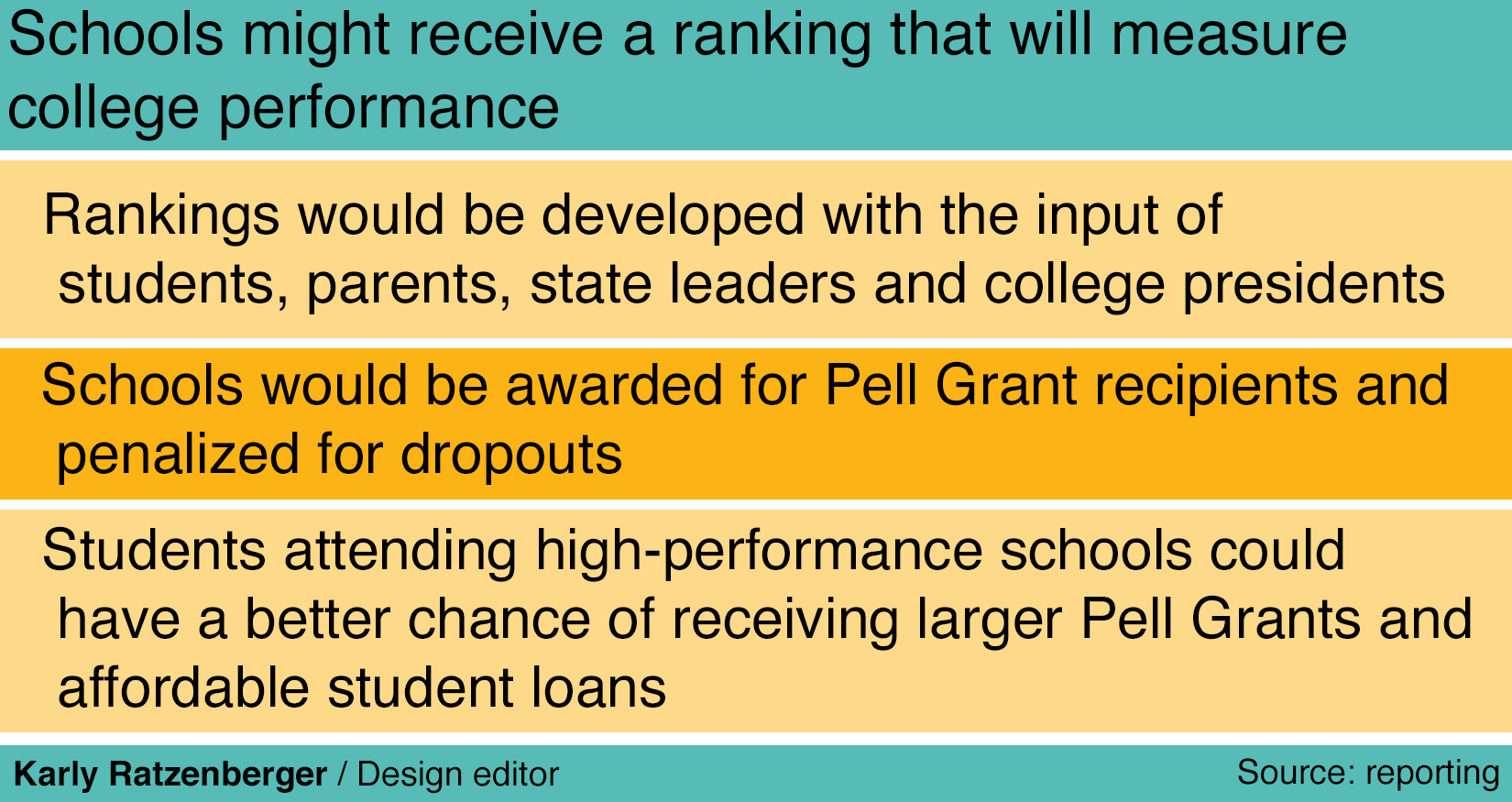
Some Ohio State students are reacting to a new plan by President Barack Obama that proposes a college ratings system tying rankings to federal aid.
Obama introduced the proposal to make college education more affordable and competitive in late August. The plan says it would “tie financial aid to college performance … challenge states to fund public colleges based on performance and hold students and colleges receiving student aid responsible for making progress toward a degree,” according to an Aug. 22 press release.
For current and recently-graduated college students, Obama’s proposal plans to help with student loan debt. The average student who takes out loans for school now graduates with more than $26,000 in debt, according to the release. Some Ohio State students had mixed reactions to the proposed plan.
“It would make colleges a lot more competitive,” said Farah Shemisa, a fourth-year in industrial systems engineering. “It gives (the institution) more incentive to do well.”
Shemisa said she believes it could also make sure financial aid is being used properly.
“It’s like a government scholarship,” Shemisa said. “You can’t receive aid if you aren’t doing anything.”
The plan comes at a time when some students need aid more than ever. Over the summer, the interest rate rose to 6.8 percent on federally subsidized student loans but a bill passed July 31 brought rates for new loans down to 3.86 percent for the short-term.
Obama plans to take action to ensure higher education remains affordable by educating borrowing students on a plan called Pay As You Earn, a repayment option capping payments at 10 percent of the loan holder’s monthly income.
About 2.5 percent of OSU students defaulted on loans between 2008 and 2010, which compared to other institutions nationwide, is a low rate of default, according to The Lantern archives.
Obama’s plan is designed to emphasize the rating of competitive colleges to help incoming students make better-informed decisions.
These ratings will be developed through public hearings and with the input of students, parents, state leaders, college presidents and others, according to the release.
In these public hearings, the access and affordability of the institution will be measured, as well as outcomes, such as graduation and transfer rates, earnings and advanced degrees of college graduates, according to the press release.
Some, though, are concerned about the ratings system because of the potential consequences, such as universities potentially turning away at-risk students or lowering their standards. Others are worried about the data to be used being incomplete, and Republicans have expressed concerns about imposing federal price controls, according to The Chronicle of Higher Education.
Another factor of the plan is to develop more innovation and competition between institutions. Obama’s proposal sets a path to incorporate more technology in the classroom through integrated online platforms, including using online study groups for additional help.
According to the press release, “students attending high-performing colleges could receive larger Pell Grants and more affordable student loans.” Institutions would be rewarded for the number of Pell Grant recipients who graduate and penalized for high numbers of college dropouts.
Noah Mitchell, a first-year in environmental science, said knowing a school was high-ranking and competitive would not have an affect on him.
“I think wherever you get a degree from, if you work hard enough and are smart, you can get a job,” Mitchell said.
He said he believes it should be students who are ranked, not the university.
“It could put students who are already at a disadvantage at an even (greater) disadvantage financially,” Mitchell said.
Obama plans to seek legislation based on the ratings by 2018, according to the release.


